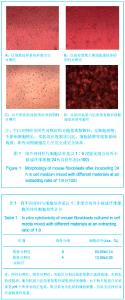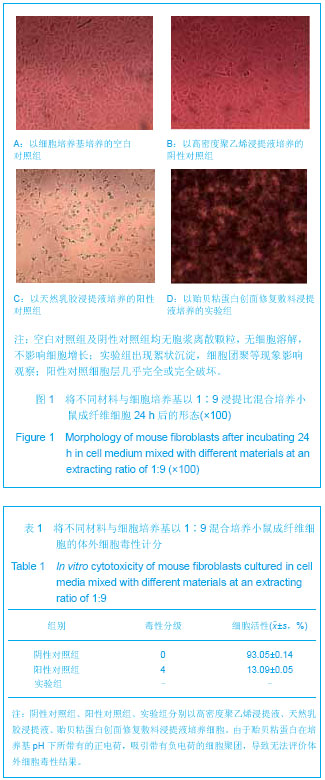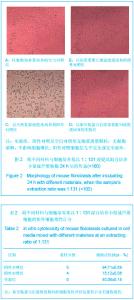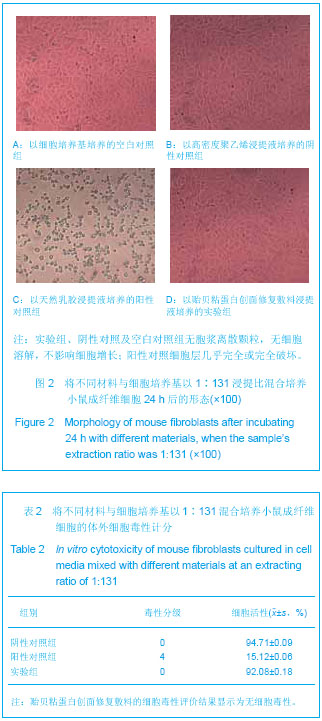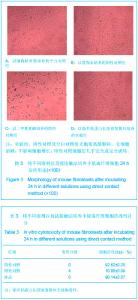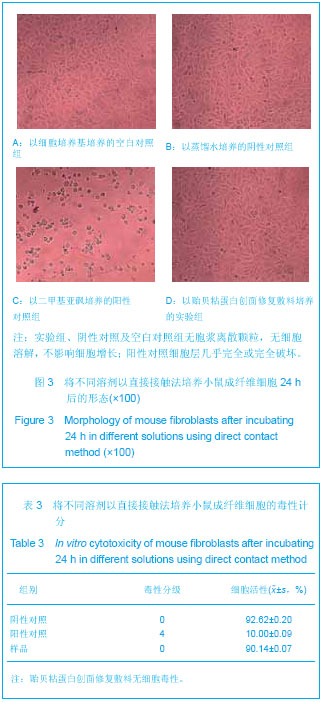| [1] |
Yuan Bo, Wang Zhiwei, Tang Yifan, Zhou Shengyuan, Chen Xiongsheng, Jia Lianshun.
Construction of polycaprolactone-tricalcium phosphate with different mixture ratios using three-dimensional printing technology and its osteoinductivity in vitro
[J]. Chinese Journal of Tissue Engineering Research, 2019, 23(6): 821-826.
|
| [2] |
Huang Ruina, Huang Ruijia, Niu Caili, Qiu Wenbo, Wu Xiaowan, Wang Xiaojun, Wang Haijiao, Yang Chaojie.
Effect of silver dressing on diabetic foot ulcer: a Meta-analysis
[J]. Chinese Journal of Tissue Engineering Research, 2019, 23(2): 323-328.
|
| [3] |
Wei Wei, Liu Yanfei, Zhang Ling, Xiong Na .
Self-assembling peptide hydrogel: hemostatic effect and mechanism
[J]. Chinese Journal of Tissue Engineering Research, 2019, 23(2): 310-316.
|
| [4] |
Qiu Wenbo, Wu Xiaowan, Han Hui, Huang Ruina, Chen Huichao.
Effects of five different dressings in the treatment of donor site: a network meta-analysis
[J]. Chinese Journal of Tissue Engineering Research, 2019, 23(14): 2292-2296.
|
| [5] |
Zhang Minbo, Peng Qifeng, Ma Yaping, Kong Weijun, Liao Wenbo.
Physical properties and biocompatibility of 3D printed bone microparticle/poly(lactic-co-glycolic acid) scaffold
[J]. Chinese Journal of Tissue Engineering Research, 2019, 23(14): 2215-2222.
|
| [6] |
Li Zhi, Tan Chunhua, Cai Xianhua, Wang Huasong, Ding Xiaoming, Zhao Yanhong.
Fabrication and biocompatibility assessment of the scaffold with biomimetic interconnected macropore structure
[J]. Chinese Journal of Tissue Engineering Research, 2019, 23(14): 2223-2227.
|
| [7] |
Bai Yulong, Gao Yufeng, Zhong Hongbin, Zhao Yantao, Guo Ruizhou, Li Li.
Allogeneic and xenogeneic tissue repair materials: how to choose a suitable virus inactivation process
[J]. Chinese Journal of Tissue Engineering Research, 2019, 23(14): 2261-2268.
|
| [8] |
Luo Kai, Yang Yafeng, Ma Teng, Xia Bing, Huang Liangliang, Huang Jinghui, Luo Zhuojing.
Effects of perfluorotributylamine/alginate/bioglass biomaterials on viability and osteogenic differentiation of adipose-derived stem cells
[J]. Chinese Journal of Tissue Engineering Research, 2019, 23(13): 1995-2001.
|
| [9] |
Wang Yuanyuan, Song Wenshan, Yu Dejun, Dai Yuankun, Li Bafang.
Preparation and evaluation of fish skin acellular dermal matrix for oral guided tissue regeneration
[J]. Chinese Journal of Tissue Engineering Research, 2019, 23(10): 1526-1532.
|
| [10] |
Liu Shaoyang, Zou Hanlin .
Biocompatibility of anodic titanium oxide: an experimental research
[J]. Chinese Journal of Tissue Engineering Research, 2019, 23(10): 1575-1580.
|
| [11] |
Cai Yuhui, Hu Kesu, Zhang Yi.
Biosafety evaluation of chitosan lactate/hyaluronate sponge
[J]. Chinese Journal of Tissue Engineering Research, 2019, 23(10): 1558-1563.
|
| [12] |
Zhang Lei, Zhou Song, Cheng Bao-chang.
Actuality and challenge of biomaterials in annulus fibrosus repair
[J]. Chinese Journal of Tissue Engineering Research, 2018, 22(6): 958-963.
|
| [13] |
Li Zhi-yue, Zhu Zhi-bo, Zhao Qun, Xiang Si-yu, Zhao Peng, Xu Zhe-wei.
Biocompatibility of basic fibroblast growth factor-poly(lactic-co-glycolic acid) microspheres/ hydroxyapatite/poly(l-lactic acid) porous materialsBiocompatibility of basic fibroblast growth factor-poly(lactic-co-glycolic acid) microspheres/ hydroxyapatite/poly(l-lactic acid) porous materials
[J]. Chinese Journal of Tissue Engineering Research, 2018, 22(6): 914-920.
|
| [14] |
Meng Ai, Wang Jian, Sui Lei.
Effect of mixed acid reflux time on purification and biocompatibility of large-inner-diameter multi-walled carbon nanotubes
[J]. Chinese Journal of Tissue Engineering Research, 2018, 22(6): 896-901.
|
| [15] |
Yang Ji-bin, Zhu Xi-zhong, Xiong Hua-zhang, Li Yu-wan, Jin Ying, Liu Yi.
Biocompatibility of human amniotic mesenchymal stem cells with human acellular amniotic membrane scaffold
[J]. Chinese Journal of Tissue Engineering Research, 2018, 22(5): 742-747.
|
